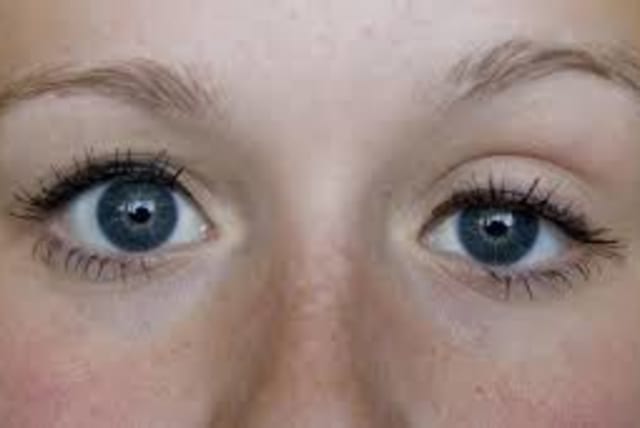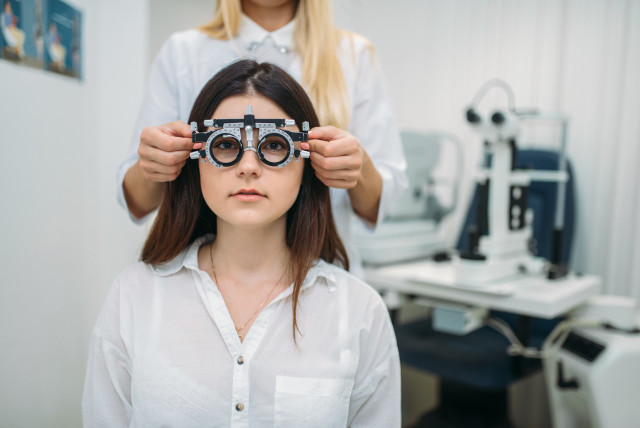Is having a lazy eye something to be worried about? This study reveals it may be

Although there is as yet no proof of causality, children with ‘lazy eye’ have been shown to be at increased risk of serious disease in adulthood.
People who had amblyopia (“lazy eye”) in childhood are more likely to suffer from hypertension, obesity, and metabolic syndrome in adulthood, as well as a higher risk of heart attack, according to a new study led by researchers at University College London (UCL).
The team that included corresponding author, Prof. Jugnoo Rahi of the university’s ophthalmology institute and the Great Ormond Street Hospital stressed that while they have identified a correlation, their research does not show a causal relationship between amblyopia and ill health in adulthood.
Amblyopia refers to reduced vision in one eye caused by abnormal visual development early in life.
The weaker “lazy” eye often wanders inward or outward and develops from birth up to age seven.
Treatment is most effective when it’s administered at an early age because the plasticity of the brain decreases as a person gets older, but it is still possible at any age to retrain the visual system, restore binocular vision, and correct amblyopia.
The researchers analyzed data from more than 126,000 participants aged 40 to 69 years old from the UK Biobank cohort who had undergone ocular examination.
Participants had been asked during recruitment whether they were treated for amblyopia in childhood and whether they still had the condition in adulthood. They were also asked if they had a medical diagnosis of diabetes, high blood pressure, or cardio/cerebrovascular disease including angina, heart attack or a stroke).
Meanwhile, their body mass index (BMI), blood glucose, and cholesterol levels were also measured and mortality was tracked.
Study shows the later effects of lazy eye
The researchers confirmed that from 3,238 participants who reported having a “lazy eye’” as a child, 82.2% had persistent reduced vision in one eye as an adult.
They published their findings in the journal eClinicalMedicine under the title “Associations between unilateral amblyopia in childhood and cardiometabolic disorders in adult life: a cross-sectional and longitudinal analysis of the UK Biobank.”
They showed that participants with amblyopia as a child had 29% higher odds of developing diabetes, 25% higher odds of having hypertension, and 16% higher odds of having obesity.
They were also at increased risk of heart attack – even when other risk factors for these conditions were taken into account.
This increased risk of health problems was found not only among those whose vision problems persisted but also to some extent in participants who had had amblyopia as a child and 20/20 vision as an adult, although the correlation was not as strong.
“Nobel-Prize-winning research has long suggested amblyopia as a great model of human neuroplasticity and neurodevelopment.
Unilateral, primary amblyopia affects one to three percent of children around the world and is characterized by aberrant competitive interaction between the two eyes,” they wrote.
Rahi said that “amblyopia is an eye condition affecting up to four in 100 children. In the UK, all children are supposed to have vision screening before the age of five to ensure a prompt diagnosis and relevant ophthalmic treatment.”
“It’s rare to have a marker in childhood that is linked with an increased risk of serious disease in adult life – and also one that is measured and known for every child because of population screening,” she added. “The large numbers of affected children and their families, may want to think of our findings as an extra incentive for trying to achieve healthy lifestyles from childhood.”
UCL ophthalmologist Dr. Siegfried Wagner concluded: “Vision and the eyes are sentinels for overall health – whether heart disease or metabolic disfunction, they are intimately linked with other organ systems. This is one of the reasons why we screen for good vision in both eyes. We emphasize that our research does not show a causal relationship between amblyopia and ill health in adulthood, but it means that the ‘average’ adult who had amblyopia as a child is more likely to develop these disorders than the ‘average’ adult who did not have amblyopia. The findings don’t mean that every child with amblyopia will inevitably develop cardiometabolic disorders in adult life.”
Jerusalem Post Store
`; document.getElementById("linkPremium").innerHTML = cont; var divWithLink = document.getElementById("premium-link"); if (divWithLink !== null && divWithLink !== 'undefined') { divWithLink.style.border = "solid 1px #cb0f3e"; divWithLink.style.textAlign = "center"; divWithLink.style.marginBottom = "15px"; divWithLink.style.marginTop = "15px"; divWithLink.style.width = "100%"; divWithLink.style.backgroundColor = "#122952"; divWithLink.style.color = "#ffffff"; divWithLink.style.lineHeight = "1.5"; } } (function (v, i) { });

